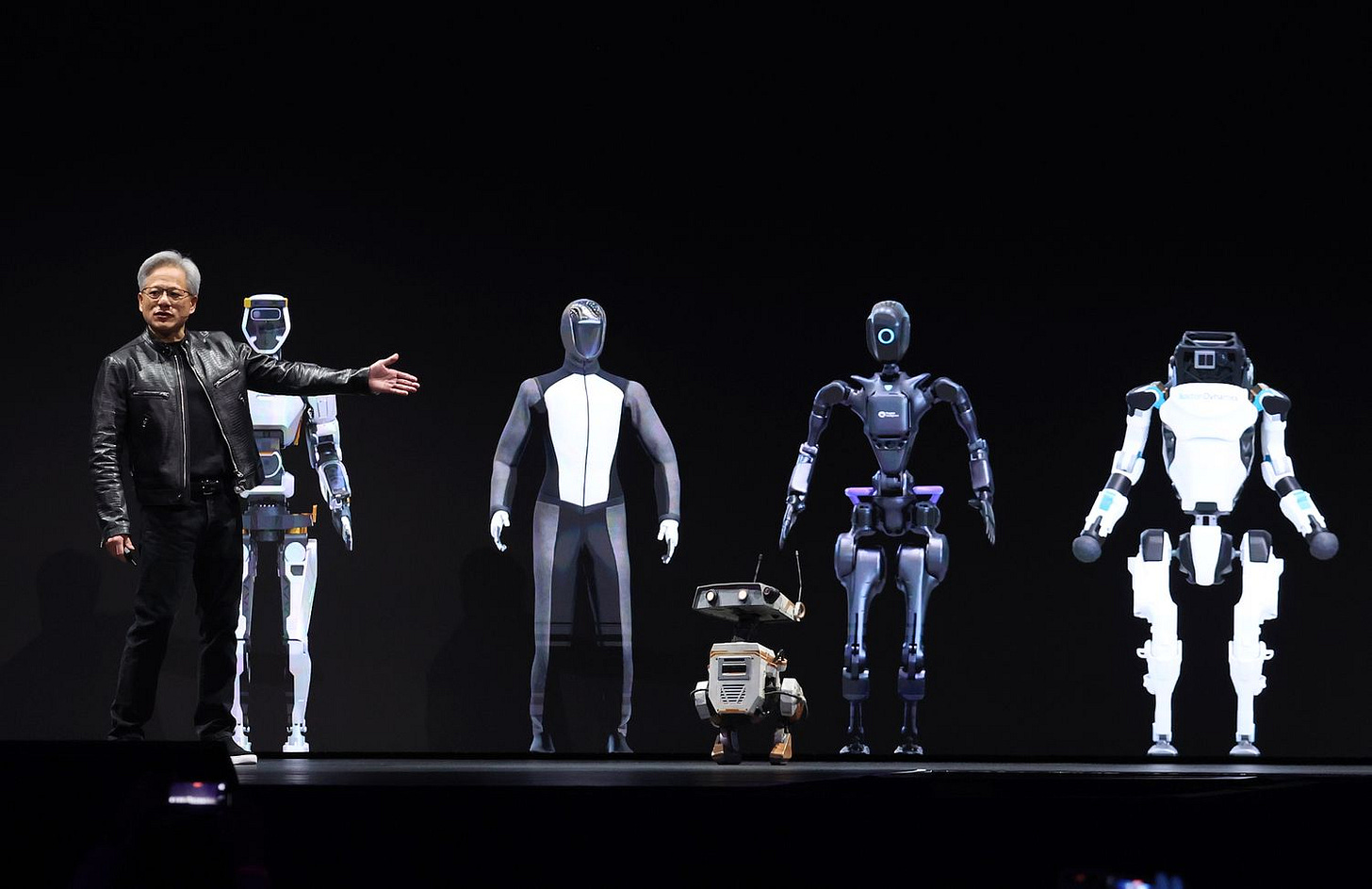Nvidia, Disney, and DeepMind Unveil Blue: A New Era for AI Robots
At Nvidia's GTC Conference CEO Jensen Huang showcases “Blue”, a new AI-driven robot, during the GTC 2025 keynote.
In a scene straight out of science fiction, Nvidia’s CEO Jensen Huang took the stage at GTC 2025 beside a sleek new robot named “Blue.” This nimble machine – developed in collaboration with Disney Research and Google DeepMind – wowed the audience with its fluid movements and responsive behavior. But Blue wasn’t the only star. Huang also announced “Newton,” a powerful AI-driven physics engine born from the same three-way partnership.
Together, Blue and Newton signal a groundbreaking leap in robotics, one that promises to reshape technology, entertainment, and everyday life around the globe.
Pushing the Boundaries of AI and Robotics
Blue’s debut and the Newton engine mark a major technological milestone. Newton is an open-source physics simulation platform designed to let robots learn complex tasks with unprecedented precision.
Built on Nvidia’s high-performance CUDA-based Warp framework, it can run massive physics calculations on GPUs to model real-world forces in stunning detail.
This means robots like Blue can be trained in virtual environments that truly reflect reality – tackling the long-standing “sim-to-real” gap where bots often stumble when moving from simulation to the physical world.
“Physical AI and robotics are moving so fast. Everybody pay attention to this space. This could very likely be the largest industry of all,” Huang remarked, highlighting the significance of this advance.
Under the hood, Newton incorporates Google DeepMind’s latest research: for example, the physics engine is compatible with DeepMind’s MuJoCo simulator and features MuJoCo-Warp, a GPU-accelerated version that delivers a staggering 70x speedup in training humanoid movement and a 100x speedup in complex hand-manipulation tasks.
“Newton is open source, empowering the entire robotics community,” Nvidia’s technical blog noted, inviting researchers everywhere to contribute and innovate on the platform.
Industry watchers are already heralding this collaboration as a potential “ChatGPT moment” for robotics – a tipping point in which AI-driven simulation vaults robot capabilities to a new level.
With faster learning and more lifelike physics, robots can acquire agility and problem-solving skills that once seemed years away. Blue itself is a vivid proof of concept: trained with Newton’s virtual physics, the real Blue robot strolled confidently alongside Huang on stage, demonstrating how quickly digital training can translate into a physical performance.
Disney’s Next-Gen Entertainment: Immersive and Interactive
For entertainment giant Disney, this technology is a gateway to more magical experiences. Disney Imagineers plan to…
Keep reading with a 7-day free trial
Subscribe to SVGN.io Silicon Valley Global News to keep reading this post and get 7 days of free access to the full post archives.


